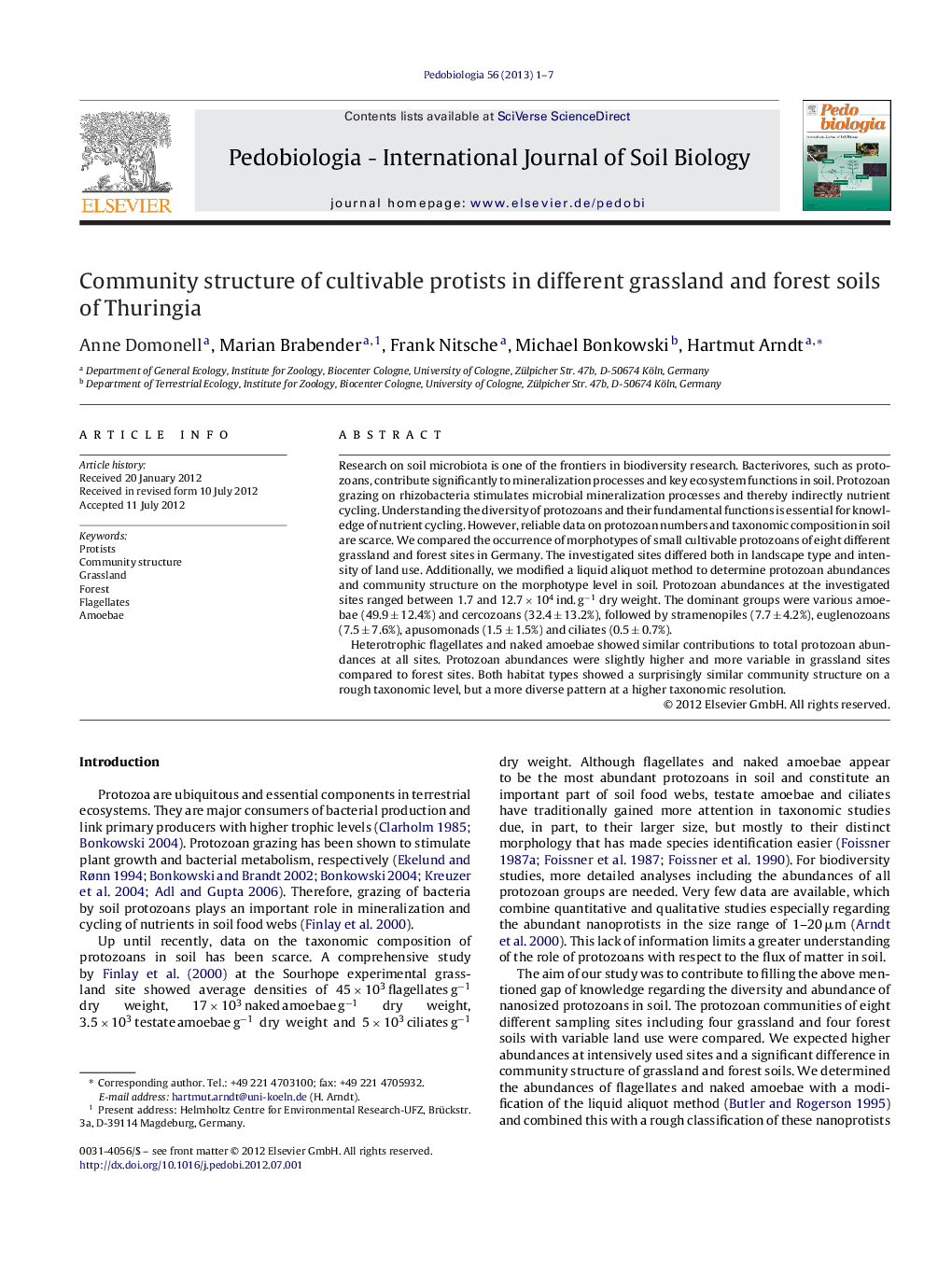| Article ID | Journal | Published Year | Pages | File Type |
|---|---|---|---|---|
| 2061151 | Pedobiologia | 2013 | 7 Pages |
Research on soil microbiota is one of the frontiers in biodiversity research. Bacterivores, such as protozoans, contribute significantly to mineralization processes and key ecosystem functions in soil. Protozoan grazing on rhizobacteria stimulates microbial mineralization processes and thereby indirectly nutrient cycling. Understanding the diversity of protozoans and their fundamental functions is essential for knowledge of nutrient cycling. However, reliable data on protozoan numbers and taxonomic composition in soil are scarce. We compared the occurrence of morphotypes of small cultivable protozoans of eight different grassland and forest sites in Germany. The investigated sites differed both in landscape type and intensity of land use. Additionally, we modified a liquid aliquot method to determine protozoan abundances and community structure on the morphotype level in soil. Protozoan abundances at the investigated sites ranged between 1.7 and 12.7 × 104 ind. g−1 dry weight. The dominant groups were various amoebae (49.9 ± 12.4%) and cercozoans (32.4 ± 13.2%), followed by stramenopiles (7.7 ± 4.2%), euglenozoans (7.5 ± 7.6%), apusomonads (1.5 ± 1.5%) and ciliates (0.5 ± 0.7%).Heterotrophic flagellates and naked amoebae showed similar contributions to total protozoan abundances at all sites. Protozoan abundances were slightly higher and more variable in grassland sites compared to forest sites. Both habitat types showed a surprisingly similar community structure on a rough taxonomic level, but a more diverse pattern at a higher taxonomic resolution.
